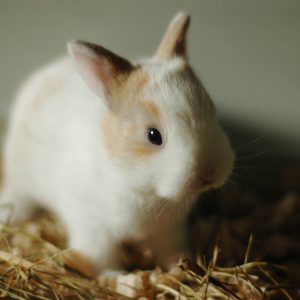Contents

A seismic shift in rabbit history occurred on February 14, 2018, when researchers from Oxford University revealed results of their study on the domestication of rabbits. If you’re a fan of rabbit history, prepare yourself for a shock. The research published in the scientific journal “Trends In Ecology And Evolution” reveals that the known history of rabbit domestication is inaccurate. Did French monks domesticate wild rabbits around 600 AD when Pope Gregory declared that fetal rabbits weren’t meat and could be eaten during Lent? Not so much. In today’s parlance, you might even call it fake news.
The Pope, The Saint, And Rabbits
The problem stems from an apparent miscited Latin manuscript from the 6th Century that mixed up Pope Gregory and another notable Gregory of the time, St. Gregory of Tours. The recent research by Dr. Greger Larson and four others from the Oxford University Department of Archaeology indicates that not only was a statement about rabbits not being considered meat incorrect, but the erroneous attribution to Pope Gregory instead of St. Gregory of Tours likely spawned the story of monks in France working to domesticate rabbits as a food source during Lent.
The Mystery Of Rabbit Domestication
OK, if rabbits weren’t domesticated in 600 AD, then when did domestication occur? Larson, et al. point out several reasons why an exact time frame for rabbit domestication is difficult, if not impossible, to pin down.
Roman writings reference rabbits in the 1st Century BC, but this doesn’t mean that’s when rabbits were domesticated. The previously mentioned mix up between Pope Gregory, Saint Gregory, and the status of rabbits as meat show that the historical record doesn’t provide an accurate date for rabbit domestication.
If you think the archeological record can help, think again. The record shows extensive exploitation of rabbits in their native habitat on the Iberian Peninsula and southwest France throughout the Stone Age and that rabbit distribution increased, particularly during the Middle Ages when they were transported across Europe. But nothing demonstrates concretely when rabbits were domesticated. The research shows that changes between the skeleton of wild vs. domesticated rabbits didn’t occur until the 18th century.
So, history and archeology can’t provide an answer, but can molecular dating? The mutation rate of rabbits is unknown. An estimate based on four possible mutation rates places rabbit domestication between 12,200 to 17,700 years ago. The report cautions, “The wide range of intraspecific variation in mutation rates generally and the lack of clear population divergences during the domestication process suggest that molecular dating approaches to domestication should be treated with caution.”
Bigger Questions Arise
It’s thought that rabbits are one of the more recently domesticated animals, but the fact that their date of domestication can’t be proved led the researchers to a surprising conclusion:
“The domestication of rabbits, like other animals, was the result of a continuous, dynamic process that reflects gradual shifts in the nature and intensity of the relationship between humans and other species.”
The researchers note the various interactions humans had with rabbits from the 1st Century and deduce that, “No single one of these activities can be classified as the domestication threshold but collectively, they formed the processes by which rabbits became domesticated.”
These findings are now calling into question beliefs about domestication of all animals. In an article from Oxford University, Dr. Larson says, “The origins of many of our domestic animals make for great bed-time stories, but these myths need to be questioned so that we can really figure out how we got so close to so many pets and livestock.” Larson plans future research into the domestication of other plants and animals.
Lovable Rabbit Companions
So what does all of this mean for you and your companion rabbits? They are just as fluffy, adorable, and cute as they were before this research was released. But maybe now they might have more of an aura of mystery about them.




